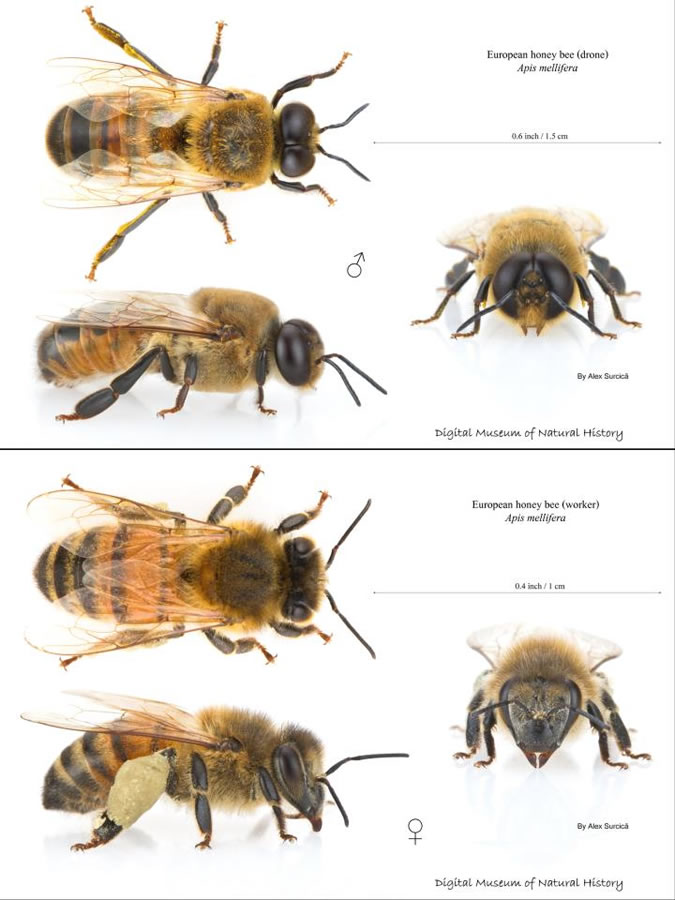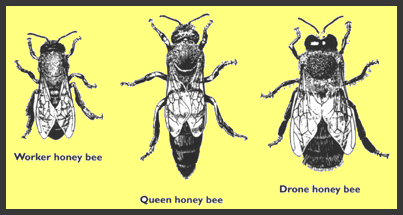differences between drone bee and worker bee
The fascinating world of bees has been a subject of interest for many scientists, beekeepers, and enthusiasts around the world. Bees play a crucial role in our ecosystem as they are responsible for pollinating crops and plants, ultimately contributing to food production. There are three types of bees in a hive – the drone bee, the worker bee, and the queen bee. In this post, we will explore the characteristics and roles of these bees in detail.
The Drone Bee

The drone bee is the male bee in the hive and has a larger body than the worker bee. Drones have no stinger; thus, they cannot defend the hive against predators. Their main role is to mate with the queen bee of the colony. Drones develop from unfertilized eggs and have haploid chromosomes, which means they have only one set of chromosomes. These bees do not participate in nectar or pollen collection or the building of the honeycomb.
Drone bees have a relatively short lifespan of approximately 40 days. Once a drone achieves sexual maturity at around 12 days old, he goes out into the world in search of a queen bee from another hive to mate with. After the mating process is complete, the drone falls to the ground and dies.
The Worker Bee

The worker bee is the female bee in the hive responsible for the majority of the work in the colony. These bees have a specialized body structure that allows them to carry pollen and nectar to the hive. Worker bees are infertile females who develop from fertilized eggs and have diploid chromosomes, meaning they have two sets of chromosomes.
Worker bees perform various activities in the hive, including caring for the young, cleaning and ventilating the hive, guarding the hive against predators, collecting nectar and pollen from flowers, and making honey. The bees produce honey by regurgitating nectar and adding enzymes to the mixture, which breaks down the complex sugars of sucrose into simpler sugars like glucose and fructose. Next, the bees fan the mixture with their wings, causing the water content to evaporate, eventually resulting in the thick and sweet substance we recognize as honey.
The life cycle of a worker bee is divided into three stages: the egg stage, the larva stage, and the adult stage. A worker bee lives for approximately six to seven weeks in the summer months and six months or longer during the winter season.
The Queen Bee

The queen bee is the largest bee in the hive and the only sexually mature female bee in the colony. Her primary role is to lay eggs and maintain the hive’s reproductive population. The queen bee develops from a fertilized egg, and her genetic makeup is identical to that of the worker bees. However, the queen bee is fed a specialized diet of royal jelly, which makes her reproductive organs develop and grow.
The queen bee is responsible for laying eggs, which can range from 1,500 to 2,000 eggs per day during her peak egg-laying period. She releases pheromones that control the hive’s behavior and communicate important information to the worker bees. Queen bees can live for up to five years, although their egg-laying ability decreases with age.
Conclusion
The different roles and characteristics of drone bees, worker bees, and queen bees are essential components of a beehive. Each bee has a specific function that contributes to the hive’s overall health and success. As bees play a vital role in pollinating crops and plants worldwide, it is important to understand these fascinating insects and their importance in our ecosystem.
We hope this post has been informative and has provided you with an insight into the world of bees. Let us continue to celebrate and support these industrious and essential insects.
References:

Source image : www.ecikai.com

Source image : sciencequestionsfrom5th-graders.blogspot.com

Source image : www.waikatobeekeepers.org.nz







